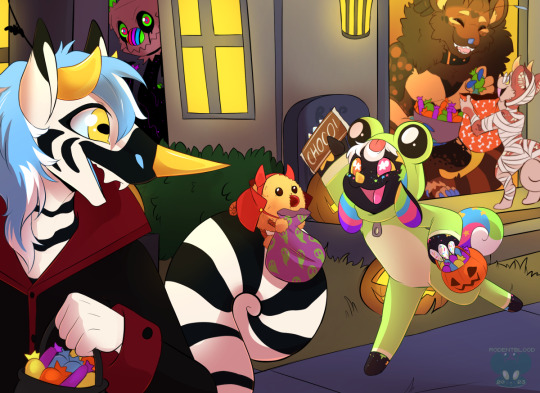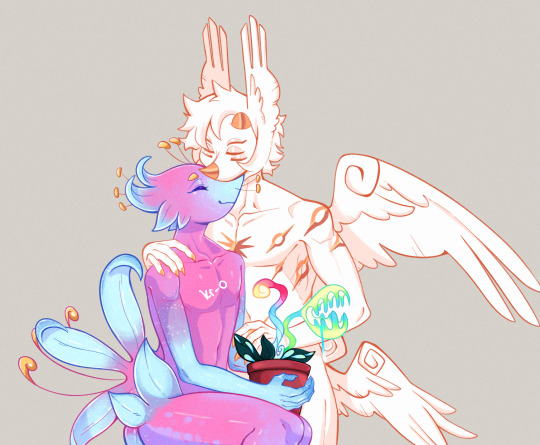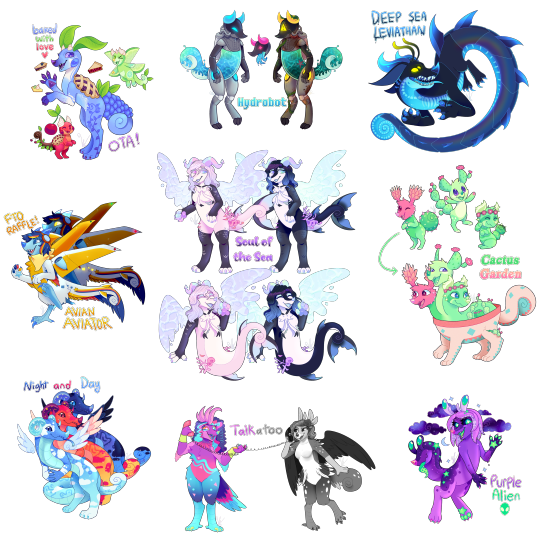#chams
Note
Normally don’t talk here for personal reasons but yayy—- finally here
Holy fuck a small youtuber made a review on the cham mod team and THANK YOU 🙏
closed species are so dangerous for people who have manic-like symptoms (coming from someone who does)
I want to leave too but i love my cham so much. They’re genuinely one of my main ocs and i have so many friends there. With the hiatus (and how they’re still making adopts to sell for like 400 it’s insane) i’ve lost most hope in the community. I used to love seel’s work and i used to view them as one of my favourite artists. I remember looking at chams as a younger kiddo being like “i want one of those!” Now i just want out. I want out so bad but i don’t want to lose the genuine connections i have with people.
It’s so unfriendly to beginner artists and newer members to the “community” in general too.
Sorry for the long-ish rant, just needed to get stuff off my chest.
🌸
11 notes
·
View notes
Photo

December 1984. Chams
104 notes
·
View notes
Photo

a “CHAMS” sweater, found in Montreal
149 notes
·
View notes
Text

my entry for the unofficial Chimereon Halloween event run by the user Pots on TH
wanted to do a bit more than what was required simply cause I really miss doing cham events ;o; so I did a lil scene to include a good handful of chams!
the chams featured are two of my own chams, and the rest belong to Montesmith, HeroSpace, mouthsweet, and CrybabyPearl
#rodentbloodart#chimereon#chams#chimereons#halloween#trick or treat#costumes#art for others#*my characters#*hamon#*???
7 notes
·
View notes
Note
H8 and G8 with Jazz and Ashley GKSKDMS

love the gay lizard fishes
9 notes
·
View notes
Note
(to the guy to asked about chams)
yeah they are dying badly
the discord is poorly moderated, i remember once there was an uproar about the lack of transparency with the updates and how late they always were and mods just, didnt acknowledge it at all until the update after where they actually sent screenshots
their biweekly updates were constantly late (and its now monthly updates, no idea if they are sticking to that though)
last i saw, the masterlist was only 1/4 done which is insane considering its been months since it was all transferred over
9 months since the hiatus started and its no where near done, i'd be surprised if the website is up and running this year ngl
but oh, mods can still do customs and adoptables just adding to their workload, and people are dumping hundreds of dollars on them, on a species that has been inactive for nearly a year
im kind of glad about the hiatus not gonna lie, it made me realise how shitty closed species can be and how 90% of the time the popular ones are only popular because of the artists behind them (that already have a large following) rather than the passion or idea
they are generally quite toxic communities so i am glad im out of it now
🍈
Related post
5 notes
·
View notes
Text

trade piece for ocularguts on th!
8 notes
·
View notes
Note
i have an inmense hatred for chimereons its insane. i cant wait to see their downfall
.
3 notes
·
View notes
Photo

My Chimereon Guest Adopts are LIVE! Check ‘em out here!
https://www.deviantart.com/victoriahwinter/art/Chimereon-Guest-Adoptables-933650152
15 notes
·
View notes
Link
The Cham live in Vietnam and Cambodia. They are descendants of refugees from the ancient kingdom of Champa who fled central Vietnam 500 years ago.
The ancient Cham were heavily influenced by India, as can be seen in their religion and art. Cham were fishermen, rice cultivators, and masters at temple construction. The remains of their religious monuments dot the landscape of Vietnam and Cambodia today.
From the sixteenth century on, the great Champa kingdom was gone. The Cham people were being persecuted and murdered by the Vietnamese. Numerous Cham fled central Vietnam for Cambodia, including a number of nobles and other dignitaries. Sometime in the seventeenth century the Cham were converted to Islam. The last royal Cham descendent died in the early 1900s.
In the twentieth century, the Cham were again the victims of massacre by the majority population, this time in Cambodia. From 1975 to 1979, Cambodia was ruled by the Khmer Rouge, communist extremists determined to erase all non-Khmer characteristics from the population. The Cham are believed to have been special targets of the Khmer Rouge.
The Cham were forced to adopt Cambodian language and customs and to abandon their own. Fishermen were forced to grow rice and dig canals, and religious leaders were stripped of their authority. Many were killed. In just two districts in Cambodia where Cham lived, over 40,000 Cham were killed by Khmer Rouge soldiers in the late 1970s. The Cham claim that over one hundred of their mosques were destroyed during the Khmer Rouge period.
In Vietnam, the Cham have fared better, but have also been subject to discrimination and ridicule, and to pressure to assimilate to Vietnamese society.
2 • LOCATION
By the late 1800s, there were only small numbers of Cham—maybe as few as 15,000—living in both Vietnam and Cambodia. Their numbers increased rapidly, however. By 1975 there were between 150,000 and 200,000 Cham in Cambodia the about 150,000 in Vietnam. Currently there are between 400,000 and 1 million Cham in both countries.
In Vietnam, most Cham continue to live in the south central area of the country. In Cambodia, the Cham have settled along the Tonle Sap and Mekong Rivers and in western, southern, and central Cambodia.
Cham villages are usually comprised of only Cham. Most are small, with between 200 and 300 people, and are located near a river or lake.
3 • LANGUAGE
Cham is related to languages spread over much of Asia and the Pacific. Most Cham in Cambodia are bilingual, speaking both Cham and Cambodian. Cambodian Cham speak a dialect called Western Cham. Cham in coastal central Vietnam speak Eastern Cham. Words in the Cham language contain up to three syllables.
The Cham language has its own writing system. Western Cham speakers use Arabic script rather than the traditional Cham script. Eastern Cham speakers in Vietnam use the traditional Cham script.
4 • FOLKLORE
Many ancient Cham are remembered as great men. A king named Che Bong Nga ascended the Cham throne of central Vietnam in 1360. He led his armies against the Vietnamese and reoccupied Cham land to the north. His victories were temporary because the Vietnamese soon conquered the Cham empire, but Che Bong Nga's triumphs are remembered and retold.
The most renowned king of all, Po Rome, ruled Champa from 1627 to 1651. His rule is remembered as glorious by present-day Cham. When Po Rome was killed by his Vietnamese enemies, his Vietnamese wife threw herself on his burning funeral pyre in grief.
5 • RELIGION
The Cham who fled the Champa kingdom of central Vietnam in the fifteenth century converted to Islam sometime before the seventeenth century. Cambodian Cham are Muslims (adherents of Islam). Cham decidation to their religion has helped them survive as an ethnic group.
The Cham worship in their own mosques. Their holy book is called the Quran (also spelled Koran). Each Cham community has a leader called the hakem. The bilal calls the faithful to prayer, and the imam leads them in prayer.
The spiritual center for Cham within Cambodia is Chrouy Changvar Peninsula, near Phnom Penh. Cham travel there to consult the high Muslim officials and to celebrate special occasions. Young Cham men may travel to Malaysia or Mecca (the holy city in Saudia Arabia) to study the Quran. Like Muslims worldwide, every Cambodian Cham hopes to make a pilgrimage (religious journey) to Mecca.
Most Cham in Vietnam are Hindus. Important Hindu officials are priests who are chosen for life. Some of these priests learned religious rituals when they were only ten or eleven years old.
6 • MAJOR HOLIDAYS
Both Hindu and Muslim Cham observe a number of religious and magic ceremonies. Most religious and magical ceremonies contain rituals that originate in Islam, Hinduism, and traditional religions of the area.
The two most important festivals of the Hindu Cham, both honoring spirits of the dead, are the Bon Kate and Bon Cabur. (Both Hindu and Muslim holidays are set by the lunar calenday, so they fall on different days in the Western calendar each year.) Bon Kate is celebrated over five days in late September or early October. Hindu Cham make religious offerings to the statue of their god. These offerings include a goat, two cups and one box of cooked rice, a tray of ground rice cakes, five cups of sticky rice, lemon juice, and ten pieces of betel (a pepper plant).
Bon Cabur is held over five days during late January or early February. Cham gather to share celebrations and an elaborate feast.
7 • RITES OF PASSAGE
The birth of a Cham child is greeted by the family and community with great joy. Babies are nursed by their mothers until two to four years of age. At age four, children are expected to feed, bathe, and control themselves, and shortly thereafter, to care for their younger siblings.
Most parents exercise almost complete control over their children until they are married. Even after marriage, the influence of parents is strong. Children are expected to show respect to their parents and elders, and are severely punished for any lapse. Cham express pride in the fact that their children have been less rebellious and their families have had less conflict than many other Cambodian families.
The Cham keep all a deceased person's rings before holding the funeral and burial. In the year following the funeral, several more ceremonies are held to honor the deceased person. At the end of the year, the bones of the deceased are exhumed (dug up). The bones are carried to the final permanent cemetery and are buried, with the person's rings, in one final ceremony.
8 • RELATIONSHIPS
The Cham often exchange the traditional Muslim greeting. One person begins by saying "Salamu alaikum," to which another responds "Alaikum salam."
Cham in Cambodia also greet each other with the sampeah (traditional Khmer greeting). The sampeah involves joining the palms together, with fingers pointing up or slightly tilted toward the other person, then bringing their hands up to their chest or forehead.
The Cham place great importance on hierarchy and proper behavior. Women must respect men, children must respect their elders. Everyone must respect their superiors, which includes anyone with higher status, greater wealth, or a more important job. Inferiors greet their superiors with a deeper bow. All visitors are treated to the best the household has to offer.
Few young people date, and virginity remains highly valued for brides. Girls and boys have the opportunity to talk and flirt only on special occasions, surrounded by relatives and neighbors.
Most men marry between nineteen and twenty-five years of age; women are slightly younger, usually between sixteen and twenty-two. It is common for a young man to ask his parents' permission and assistance in finding a wife than to do so on his own. His parents or a matchmaker approach the young woman's family to see if they are interested in a match. If the response is positive, the families negotiate the terms and time of the marriage.
After an exchange of gifts, the young couple marries. It is still common for many young couples to spend the first year of marriage in the home of the woman's parents. After the parents are assured of their son-in-law's stability, or after the birth of the first child, the young couple moves into a new house built for them by their families.
9 • LIVING CONDITIONS
Cham homes are made of split bamboo and thatch. Most houses are built on stilts 4 to 12 feet (1.3 to 4 meters) off the groung to protect them from seasonal flooding. Chickens, ducks, and oxen are kept in the area beneath the house. Family members often gather beneath the house during the heat of the day to do chores, look after the children at play, and visit with neighbors and passersby. In the evening, most Cham retreat upstairs to their homes, where they eat, chat, and rest.
The upstairs portion of the house may be an open room or may be divided into several rooms: a private room for keeping possessions and a public room for entertaining guests, eating, and visiting. A lean-to kitchen may be attached to the house, also on stilts.
Cham do not have electricity, running water, sewage systems, or appliances. Houses usually contain little furniture, decoration, or utensils. A few books, a pad of paper, and a pencil or two may be wrapped in plastic and placed in the rafters for safekeeping. People sleep on mats, which are rolled up and leaned against the wall or stored overhead during the day. Some Cham, especially in Cambodia, have low platform beds.
Cham cook over an earthenware stand placed over a fire. Because most Cham do not have refrigeration, they use preserved, salted, or fresh food. Kitchen utensils include pots, bowls, cooking ladles, and spoons made of coconut shells.
10 • FAMILY LIFE
Cham observe a fairly strict division of labor, with women caring for children and the household. Men are responsible for rice cultivation and the chores of construction, tool craft, and repair.
Women do most of the textile manufacture, such as carding, spinning, and weaving cotton. They are also responsible for the family vegetable and fruit gardens and for threshing, husking, and milling the grain. Women carry the family's water from the nearest lake, river, or pond.
The vast majority of Cham marry within their group and religion. When a girl and her parents (or a boy and his parents) agree on a selection, the parents approach the other's parents.
Cham marriages are simple, involving little expense or ceremony. In the presence of an imam (spiritual leader) who acts as the witness, the parents of the young woman ask the groom if he will accept their daughter as his bride. After he agrees, the marriage is concluded and is then celebrated with a feast. Polygynous marriages are allowed (up to four wives), although the first wife must approve the selection of any subsequent wives. Divorce is also permitted. Most polygamy and divorce occurs in families with more resources.
Cham trace their descent and pass inheritance through the maternal line. Residence is also matrilocal, so that young couples go to live with the wife's family.
11 • CLOTHING
The Cham wear distinctive clothing. Both men and women wear a batik, a garment much like a sarong, which is worn knotted around the waist. Men wear a shirt over their batik, while women wear close-fitting blouses with tight sleeves over theirs. Men and women usually cover their heads with turbans or scarves.
On religious days, leaders dress completely in white and shave their heads and beards. Children usually wear shorts and go barefoot or wear rubber thongs.
12 • FOOD
Cham of Cambodia and Vietnam eat much as their fellow countrymen. Rice is eaten at almost every meal. Fish is almost as important and is eaten fresh, dried, and salted.
A traditional meal is a bowl of steamed rice eaten with a sauce containing bits of fish, fowl, or meat, eggs, vegetables, and spices such as onions, chilies, garlic, mint, ginger, or lemon grass. Pork and alcohol, consumed by many Cambodians, are forbidden to Muslim Cham.
Cham usually eat an early meal of leftover rice, cakes, or fruit either at home or in the field. The big meal of the day is lunch around midday, followed by supper at twilight.
Cham men usually eat together, women and children later. Each has a bowl of rice, and all take bites of food from several dishes sitting in the middle of the group. Cham may eat sitting in a squatting position, with their feet flat on the ground and their knees bent sharply. In Vietnam, most Cham use chopsticks to eat, while in Cambodia, most use spoons.
3 notes
·
View notes
Note
Ughhhh of course, magically after bugboxx created terraliens which gets super popular, is full of super popular artists, has cham moderators in it and notable members of chams in it, now suddenly bugboxx gets to be a guest artist. Nooo favouritism in chams definitely doesn’t exist!!! Everyone has equal opportunity!!! Give me a damn break…
.
4 notes
·
View notes
Note
(about the recent cham batch) people bidding $650 on a species thats been closed for way too long, and doesnt seem to be opening again anytime soon, is WILD
i hope these people realise what they are spending this insane amount of money on that they could spend elsewhere on something they would enjoy for longer. you could buy SO much with $650 but nah rather have a png of a dying species that will probably be traded away in a month
🌸
10 notes
·
View notes
Note
Someone please tell me what any of the different forms of cham4072 have to do with each other, especially on the original design (description of ML). The current design has a little more cohesion but what the hell is that original custom. All the forms still look buttugly tho

original

need a whole thesarus to describe how poorly designed and downright ugly this cham is none of it looks like a cham and even then it's completely nonsensical. like someone clicked randomize on all the traits and had to make a cham out of them. it's also 500 dollars go figure
1 note
·
View note
Text

Inspired by a stupid twitter meme 😂 but this is basically how their first meeting went like
9K notes
·
View notes
Photo

The mist rolls in what's hiding between the canyons. This is available to my $10 patrons!
http://Patreon.com/Cornymaps
#dnd#dungeons and dragons#pathfinder#battlemaps#maps#map#battle maps#battle map#digital maps#nature#wilderness#witcher#ttrpg#chams#wargames#random encounter#osr#roll20#fantasy grounds#travel#spooky#grass
0 notes
Photo

lana shows her pride! 💖
for the 2023 pride collaboration!
10 notes
·
View notes